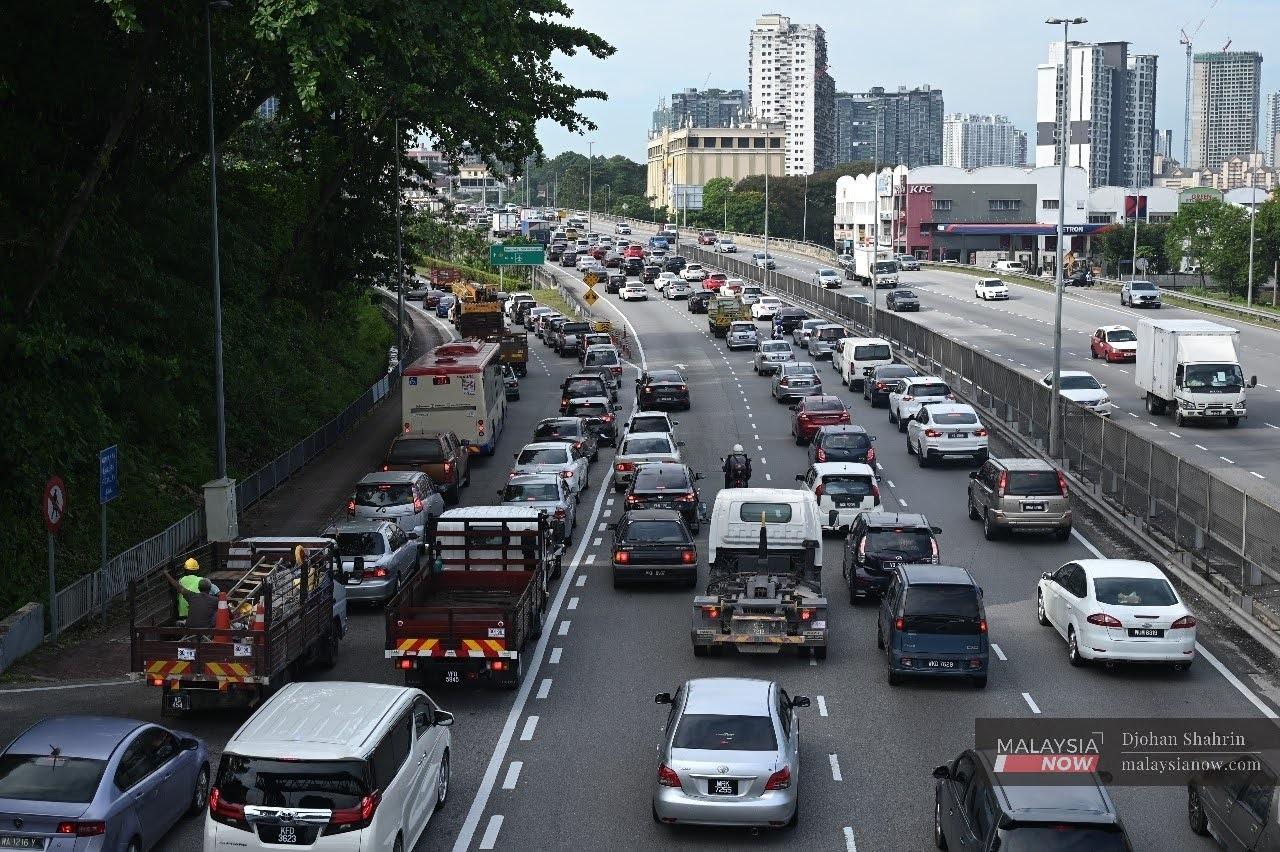Unravelling the Klang Valley’s traffic woes
There has been a steady build-up of traffic, especially in the capital city, regardless of whether it is peak hour or not.
Just In
For weeks, road users in the Klang Valley have had one common complaint: the steady build-up of traffic regardless of time, weather or road conditions.
Throughout the capital city alone, the congestion once associated with workers leaving the office appears to have spread to all hours of the day, leaving drivers caught in a gridlock despite the most careful of plans.
A recent Index Data report shows that traffic jams during peak hours in Kuala Lumpur throughout the last week were worse than they were even in 2019, before the Covid-19 pandemic.
The question for many now is why this is happening, and what can be done about it.
Road safety expert Rozmi Ismail attributed the jams to the greater freedom of movement allowed as the country seeks to transition to the endemic phase of Covid-19.
“It’s a continuation of the congestion that occurred during the recent Hari Raya period,” Rozmi, of Universiti Kebangsaan Malaysia, told MalaysiaNow.
“As a result, traffic jams are occurring almost every day, including week days, irrespective of whether it’s rush hour or not.”
Works Minister Fadillah Yusof previously said that the government would build three new highways to reduce traffic congestion in Kuala Lumpur: the Petaling Jaya Traffic Dispersal Elevated Highway, Putrajaya–Bangi Expressway and Kuala Lumpur Northern Dispersal Expressway.
But Rozmi said the construction of these roads would take a long time, and would not match the pace of Malaysia’s growth in private vehicle ownership.
As of 2019, the transport ministry had registered some 31.2 million vehicles including commercial vehicles and motorcycles.
This was an increase of 3.02 million from the figures in 2018, when about 28.8 million vehicles were registered, and in line with the trend of growth in vehicle registrations since 2010.
Fellow road safety expert Law Teik Hua said that in keeping with the trend around the world, public transportation in Malaysia is still unpopular and considered by many as unsafe.
“Two-wheelers or small cars might be the preferred mode of transport as the economy opens up and the need for mobility increases,” Law, the director of Universiti Putra Malaysia’s Road Safety Research Centre, told MalaysiaNow.
“This in turn could be a reason for the current surge in traffic on the roads.”
Law added that public transportation providers have yet to “do enough” to restore trust in their services.
“To restore trust in public transportation systems following Covid-19 is the top responsibility of operators,” he said.
Rozmi agreed that public transportation could use a boost, adding that this could reduce the use of private vehicles.
He said the increase in the number of vehicles not only worsens congestion but also increases the rate at which accidents occur.
Adding to the volume of vehicles on the road are those in the micromobility category such as bicycles and electric scooters which have been gaining in popularity.
Transport Minister Wee Ka Siong recently said that guidelines for road use for vehicles in this grouping would be announced in time to come.
Law said the use of micromobility vehicles could help reduce traffic congestion in cities.
“The goal of micromobility is to address several urban issues at once,” he said.
“Incentivising individuals to use micromobility devices rather than automobiles could help alleviate traffic congestion. Having more micromobility devices on the road, especially for short-term excursions, would reduce the need for individuals to drive.”
Nevertheless, he cautioned against the wholesale lifting of the policies implemented in other countries, saying Malaysia’s traffic conditions and cultures are very different, especially in terms of road safety.
“To maintain public safety, the usage of micromobility modes must be properly planned and implemented in an effective manner,” he said.
“For example, having a designated area in the city centre for micromobility, including bicycles and pedestrians, should be considered.
Then, there is the debate on Malaysia’s urban landscape which has long prioritised road vehicles over those on foot.
In some developed countries, highways have been replaced with parks and other public spaces.
But Rozmi is sceptical about how far such ideas can go in Malaysia, at least for now.
“I don’t see when we will achieve developed nation status,” he said.
“There have been no major changes in public transportation. Even high-speed trains are limited to certain states only.”
Subscribe to our newsletter
To be updated with all the latest news and analyses daily.
